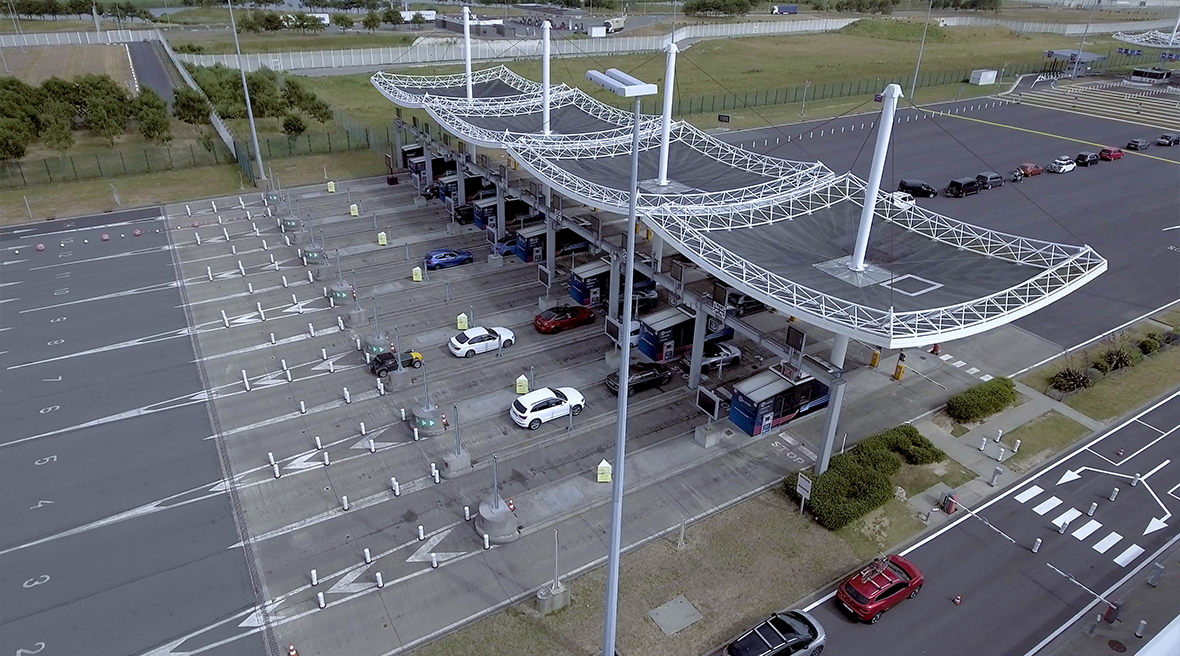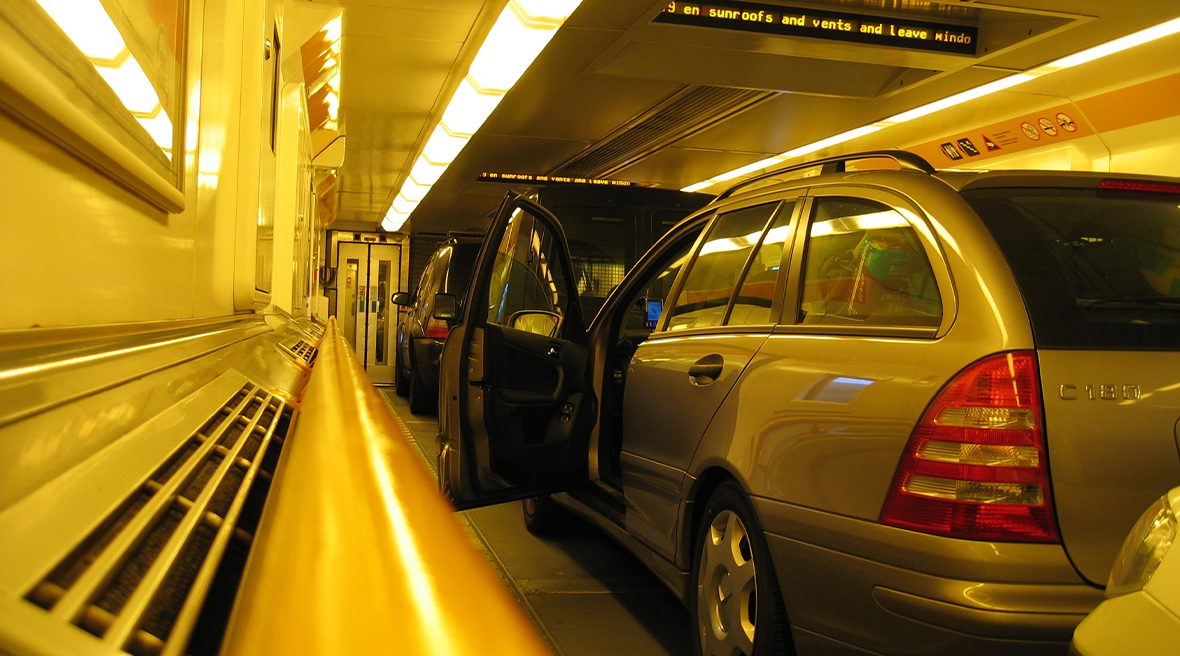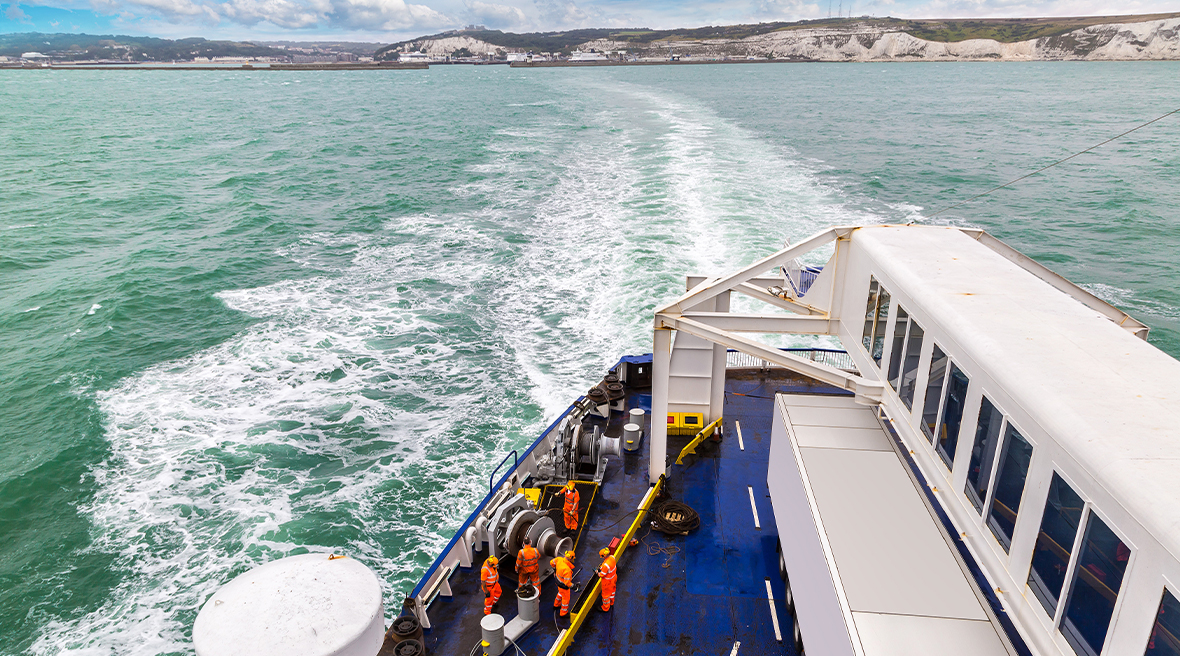If you’re considering taking a car to France, you have two options.
Which is better – LeShuttle or ferry to France?
Both LeShuttle (formerly known as Eurotunnel Le Shuttle) and a ferry service will get you to France in a relaxing and enjoyable way. The reasons people choose one or the other are varied, so neither is ‘better’, it’s more a case of making the journey work for you.
Many people choose LeShuttle for flexibility, comfort and speed. From Folkestone to Calais it only takes 35 minutes, where a ferry across the channel can take around 90 minutes.

Remember to include boarding times when comparing how long your trip will take
What’s the quickest way to take your car to France?
If you wish to save time, LeShuttle is the best option.
Driving to France with LeShuttle from Folkestone to Calais is the quickest way to drive into France, with a crossing time of 35 minutes. From Calais you have the rest of France to drive at your leisure and we have plenty of guides to help you plan trips to exciting destinations. Whether you are planning a glamping trip, a sojourn in Paris, or heading further afield to areas like Brittany, you’re sure to find somewhere to visit and plenty of picturesque stops along the way.
The beauty of driving through France is the well-connected and maintained roads that allow you to see French landscapes up close. If you take the ferry into central and western France the trip will be longer and may be more expensive. For example, to reach Dieppe it is around 4 hours on the ferry, and as this is the journey time on the boat, you'll miss the scenery you can see on the drive south.

Relax in the comfort of your own car on your way to France with LeShuttle
What’s the most environmentally friendly way to drive to France?
Today it is more important than ever to consider the sustainability of how we travel the world. LeShuttle take sustainable travel and environmental impact seriously. The CO2 emissions produced in transporting a lorry across the Channel by LeShuttle are nearly 12 times lower than those produced in transporting the same lorry on a ferry. We are committed to developing eco-responsible modes of transport. Our trains have recently been upgraded to enable accurate reading of CO2 emissions for each crossing.
What about boarding times? Is LeShuttle quicker than a ferry?
|
The boarding times for LeShuttle are quicker than most ferry crossings. And if you arrive early or late within a 2-hour window, you may be offered a space on the next available departure without any extra charge. LeShuttle have up to four departures an hour, whereas ferries run between 15-30 times a day if you choose to travel with P&O Ferries or DFDS Seaways. Find full details of our current boarding times.
|
Even without the addition of boarding times, the reduced travel time that LeShuttle offers means reaching your destination in France is far faster.
If you are looking to travel during the festive period, LeShuttle are open 365 days a year, with just slightly fewer boarding times available over the Christmas period. However, ferry services don’t run on Christmas Day and have limited services running during the festive period.
|
|
Is a ferry to France better for the kids?
|
If you are travelling on LeShuttle as a family, particularly with young, energetic children, we have a range of facilities available for your little ones. LeShuttle's UK and Calais terminals include baby changing facilities.
LeShuttle crossings take just 35 minutes and before you know it you will have arrived in Calais to continue the rest of your adventure. You can avoid the worry of getting everyone in and out of the car with a trip using LeShuttle, as you will arrive so quickly and can all remain in your car throughout the crossing.
The weather can also play havoc with ferries crossing the Channel. Stormy seas can mean upset stomachs for young and old, but that is never a problem on LeShuttle. Whatever is happening in the water above the tunnel, your journey will be free of any little ‘mishaps’!
Travelling using a ferry does mean that if the weather is nice enough you can sit above deck. Usually ferry companies offer play areas, live entertainment and games rooms, but check what’s available before you travel.
|

Ferry crossings are another option when travelling
Can you stretch your legs on LeShuttle like you can on a ferry?
|
Yes, you can get out of your vehicle during a LeShuttle crossing. If you’re travelling with any pets they must remain in the car during this short journey, but this shouldn’t be a problem, as there is plenty of opportunity to give your pet a quick run around in the pet exercise areas available at the terminal beforehand. Boarding starts approximately 25 minutes before departure time.
If you’re choosing to take the ferry to France, you can head to the upper decks to enjoy refreshments and a walk if you wish. You might be able to spend the crossing with your dogs – it depends who you’re sailing with. P&O Ferries operate a pet lounge, where dogs and their owners can stay together (no other pets allowed). This has to be added when you book your ticket, and there is an additional charge.
DFDS do not have a pet lounge, but passengers can visit their pets in their cars during the journey, accompanied by a crew member. This must be at an allotted time, and booked onboard. Otherwise, any pets you’re travelling with will need to stay in your car unattended for the duration of the journey.
|

Pet exercise areas at LeShuttle
What is the cheapest way to take a car to France?
Some ferry operators allow you to book a crossing up to a year in advance, meaning you could save a little on the cost. Longer crossings to parts of France other than Calais may be expensive due to their longer travel time, no matter how far in advance you book.
Whichever option you choose, LeShuttle (Eurotunnel) or ferry, make sure to book ahead of time to get the best-value fares.
On both ferries and LeShuttle, the cost of Channel crossings can vary significantly depending on:
- The size of your car
- The time and season of your crossing
- The type of ticket you buy and when you buy it
You can book LeShuttle tickets up to 12 months in advance and you’ll receive the best available price the earlier you book and through booking directly with us.
So, remember this when you are looking for deals on either mode of transport. See LeShuttle ticket options and fares so you can plan your next trip.
What are the disadvantages of travelling to France by ferry?
- The crossing is longer – 90 minutes (on LeShuttle it is 35 minutes)
- Depending on which operator you sail with, you might be separated from your pets during the crossing
- Fewer crossings per day than LeShuttle
- Longer boarding times
- Less environmentally-friendly than LeShuttle
- More crowded
- Not open 365 days a year
What’s the best way to cross the English Channel?
Again, there is no better or best way to cross the Channel. Many people will prefer to fly. If you are going via LeShuttle from Folkestone or taking a ferry to France with a car from Dover to Calais, each will have their respective merits, benefits and disadvantages.
If it’s speed, sustainability and frequency you are looking for, however, we would recommend LeShuttle.
|
|
Book your next journey to France with LeShuttle